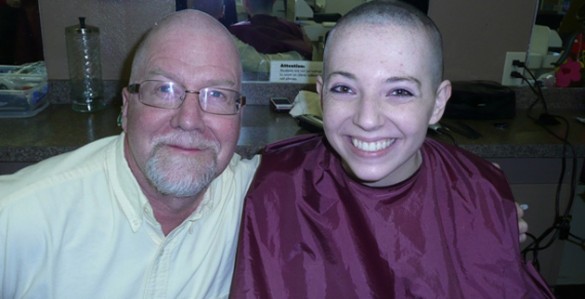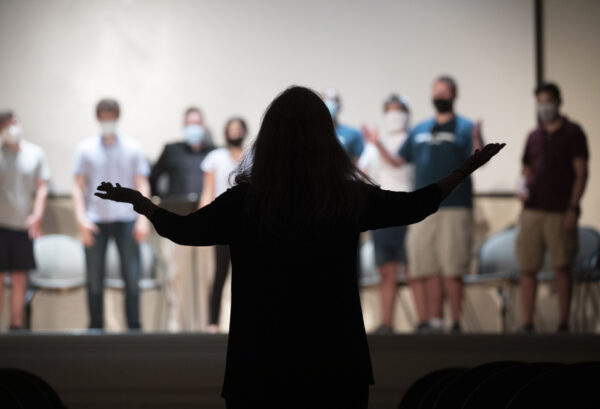
Vanderbilt University Theatre’s production of W;t will provide an increased empathy and understanding into issues surrounding a devastating illness, thanks, in part, to a Vanderbilt surgeon’s production consultation.
W;t, Margaret Edson’s Pulitzer Prize-winning drama about an English professor dealing with ovarian cancer, will be performed at Neely Auditorium April 5, 6, 11, 12 and 13 at 8 p.m. There also will be a Sunday matinee on April 7 at 2 p.m.
“Last summer I began meeting with director Jon Hallquist to explore various aspects of real-world cancer treatment, ranging from the basics of hospital equipment for chemotherapy to issues surrounding doctor/patient relationships,” said A. Scott Pearson, associate professor of surgery. Pearson, who also has an appointment in the Center for Medicine, Health and Society, has a strong research-based interest in the value of patient narratives in medicine.
The story revolves around Professor Vivian Bearing, who agrees to undergo several rounds of experimental chemotherapy after being diagnosed with Stage IV metastatic ovarian cancer. Bearing quotes extensively from John Donne’s poetry as she reflects on her life. The play’s title, with the use of a semicolon in place of the letter “i,” refers to the use of a semicolon instead of a comma in one of Donne’s sonnets.
To heighten the production’s realism, Laura Winston, a Peabody College senior from Stevensville, Mont., agreed to have her head shaved for the role. In addition, Hallquist, who is an associate professor of theatre, decided to be in solidarity with Winston and real-life cancer patients by shaving his head as well.
“[rquote]Besides addressing provocative metaphysical issues, W;T explores the potential tension between research and humanity,” Hallquist said.[/rquote] “Not championing one over the other, Edson cleverly advocates the need for research that is tempered with humanity.”
Pearson teaches an undergraduate class on narrative medicine in which students read W;t and discuss issues surrounding the doctor-patient relationship. He said that the story takes an in-depth look at the emotional and psychological challenges for patients with terminal illnesses. It also raises important questions about how health care could be improved for the critically ill.
Pearson provided input to the production on various protocols of the medical profession, from IV infusion and X-ray techniques to the medical hierarchy on patient rounds and when health care workers use gloves. In this collaboration between the medical center and university, Pearson and Hallquist worked with personnel at VUMC Storage to obtain such items as a hospital bed, exam table, X-ray view board and a defibrillator for the final scene of the production.
Tickets for the general public are $10. For more information, contact Laura Hynek or call (615) 322-2404.















